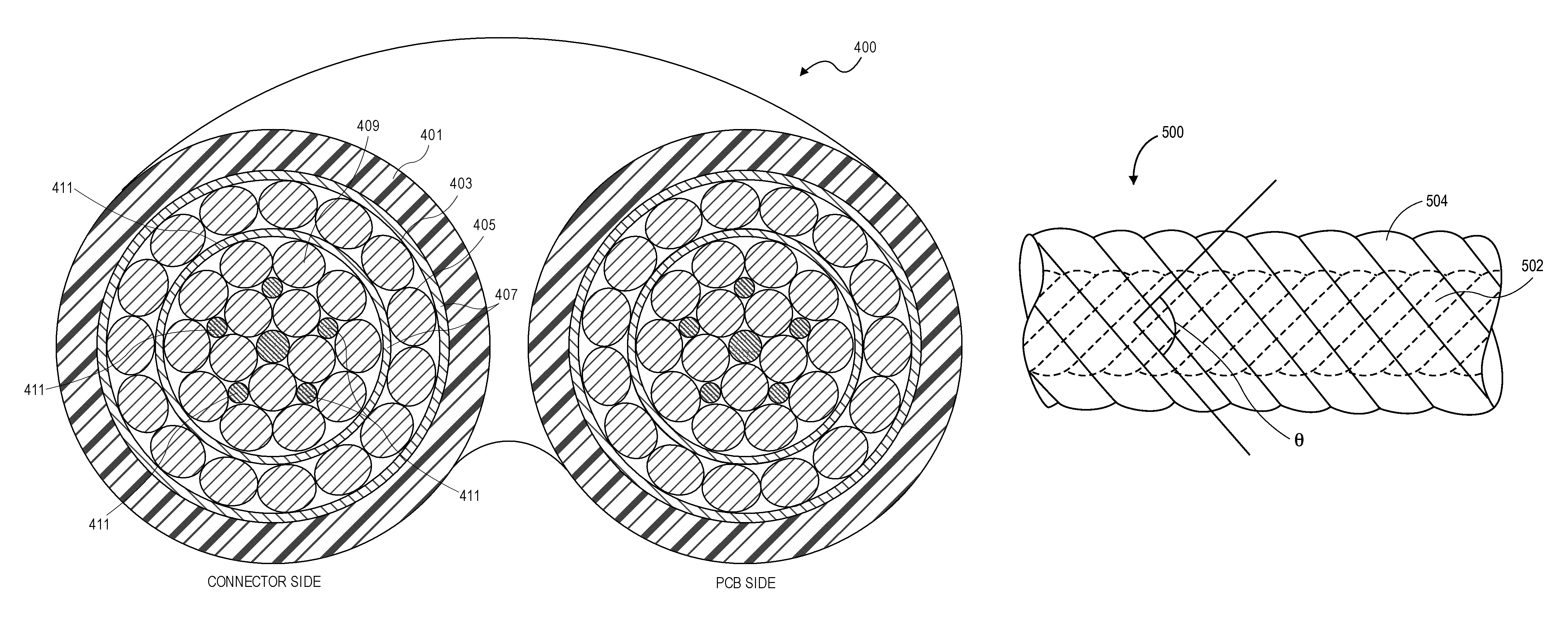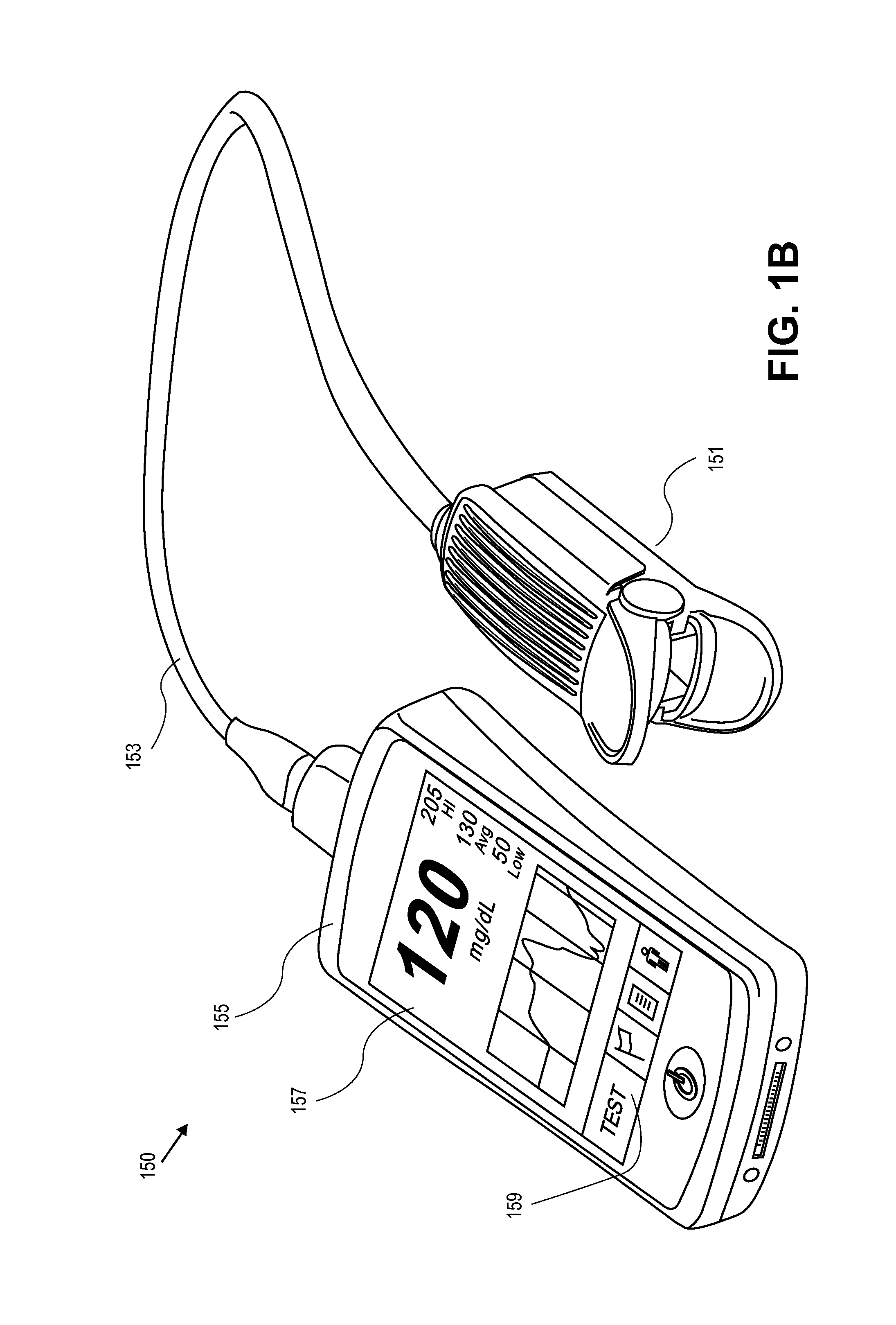Low noise cable providing communication between electronic sensor components and patient monitor
a low-noise, cable technology, applied in the direction of cables, insulated conductors, conductors, etc., can solve the problems of increasing the risk of patient injury, increasing so as to reduce the risk of injury, and avoid injury
- Summary
- Abstract
- Description
- Claims
- Application Information
AI Technical Summary
Benefits of technology
Problems solved by technology
Method used
Image
Examples
Embodiment Construction
[0026]As shown in FIGS. 1A and 1B (described in more detail below), a physiological measurement systems 100 includes a monitor 101, a cable 111, and a sensor 115. The sensor 115 can be any type of physiological sensor. Illustrated in FIGS. 1A and 1B are embodiments of noninvasive optical sensors. In the case of noninvasive optical sensors, the monitor 101 sends drive signals to one or more emitters in the sensor 115 via the cable 111. The emitters irradiate tissue under observation. One or more detectors in the sensor 115 detect the radiation leaving the tissue and send a signal back to the monitor via the cable responsive to the attenuation. This sequence produces more accurate results when the noninvasive optical sensor 115 remains substantially fixed with respect to the tissue of the patient. In the embodiment where the sensor 115 comprises a reusable sensor, the sensor 115 is often held in place by only the spring action of a clothespin-shaped housing. When a cable is stiff or b...
PUM
| Property | Measurement | Unit |
|---|---|---|
| angle | aaaaa | aaaaa |
| angle | aaaaa | aaaaa |
| angle | aaaaa | aaaaa |
Abstract
Description
Claims
Application Information
 Login to View More
Login to View More - R&D
- Intellectual Property
- Life Sciences
- Materials
- Tech Scout
- Unparalleled Data Quality
- Higher Quality Content
- 60% Fewer Hallucinations
Browse by: Latest US Patents, China's latest patents, Technical Efficacy Thesaurus, Application Domain, Technology Topic, Popular Technical Reports.
© 2025 PatSnap. All rights reserved.Legal|Privacy policy|Modern Slavery Act Transparency Statement|Sitemap|About US| Contact US: help@patsnap.com



